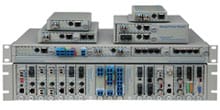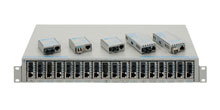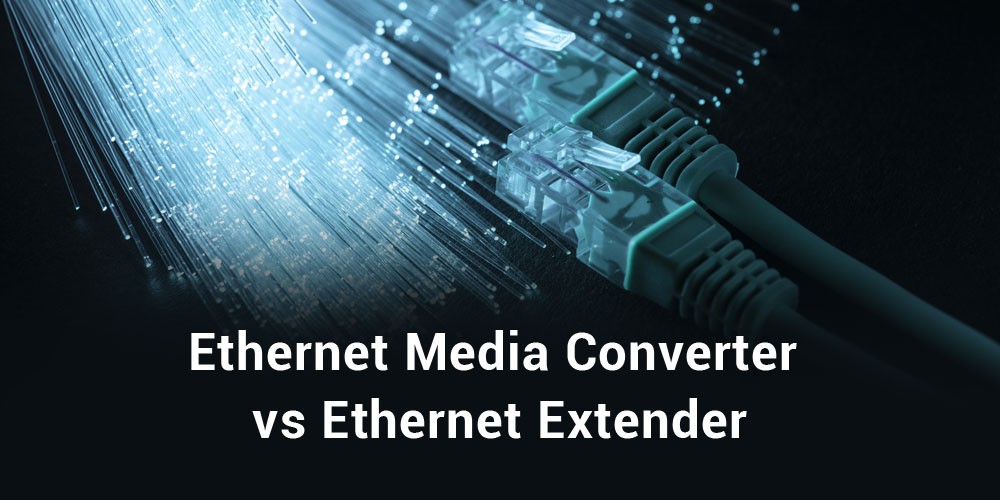- Products
- PoE Media Converters and Switches
- Ethernet & PoE Switches Product Selector
- Multi-Gigabit Ethernet and PoE Switches
- PoE PSE Commercial Switches
- PoE PSE Industrial Fiber Switches
- PoE Industrial Copper Extenders
- PoE Powered Media Converters
- PoE PSE Media Converters
- PoE Extenders & Injectors Product Selector
- Pluggable Transceivers Product Selector
- Single Pair PoE Products
- Product Lines

- iConverter Managed Multi-service Platform
- Copper to Fiber Media Converters
- Ethernet Media Converters
- 10 Gigabit Copper-to-Fiber
- 10/100/1000 Copper to 10 Gigabit Fiber
- 10/100/1000 Copper-to-Fiber with Integrated Management
- 10/100/1000 Industrial Copper-to-Fiber with Integrated Management
- 10/100/1000 Copper-to-Fiber with VLAN
- 10/100/1000 Dual Media Converter with VLAN
- Gigabit Copper-to-Fiber
- 10/100 Copper-to-Fiber with Integrated Management
- 10/100 Industrial Copper-to-Fiber with Integrated Management
- 10/100 Copper-to-Fiber with VLAN
- 10/100 Copper-to-Fiber
- Fast Ethernet Copper-to-Fiber
- Fast Ethernet Redundant Links
- 10Mbps Copper-to-Fiber
- 10Mbps Copper to Coax
- TDM Media Converters
- Serial Media Converters
- Ethernet Media Converters
- Fiber to Fiber Media Converters
- 10 Gigabit Fiber-to-Fiber Converter and Transponder
- 10 Gigabit Industrial Converter and Transponder
- SFP-to-SFP Fiber Converter and Transponder
- SFP-to-SFP Industrial Fiber Converter and Transponder
- Gigabit Fiber to-Fiber with 3 Rs
- 100/1000 Fiber-to-Fiber with 3 Rs
- Gigabit Fiber-to-Fiber
- Fast Ethernet Fiber-to-Fiber with 3 Rs
- Fast Ethernet Fiber-to-Fiber
- OC-3/STM-1 Fiber-to-Fiber
- OC-12/STM-4 Fiber-to-Fiber
- Carrier Ethernet Network Interface Devices
- CE 2.0 - 10G Demarcation NID
- CE 2.0 - 10/100/1000 Mult-port NID
- CE 2.0 - 10/100/1000 Mult-port NID with PoE
- CE 2.0 - 10/100/1000 8-Port NID
- CE 1.0 Service OAM - 10/100/1000 NID
- CE 1.0 Link OAM - 10/100/1000 Copper-to-Fiber NID
- CE 1.0 Link OAM - 10/100 Copper-to-Fiber NID
- CE 1.0 Link OAM - Gigabit Fiber-to-Fiber NID
- CE 1.0 Link OAM - Fast Ethernet Fiber-to-Fiber NID
- CWDM Multiplexers
- T1/E1 Multiplexers
- Ethernet Switch Modules
- Management System
- Chassis Options

- 1-Module Industrial Chassis

- RuggedNet Industrial Switches and Extenders
- Industrial PoE PSE Fiber Switches
- Multi-Gigabit Managed Industrial PoE+/BT Switches
- Multi-Gigabit Unmanaged Industrial PoE+/BT Switches
- 10G Managed 802.3bt PoE Switches
- 10G Unmanaged 802.3bt PoE Switches
- 10G Managed PoE+ Switches
- 10G Unmanaged PoE+ Switches
- 1G Managed PoE+ Switches
- 1G Unmanaged PoE+ Switches
- 1G Unmanaged 802.3bt PoE Switches
- 1G Managed 802.3bt PoE Switches
- Industrial SPE Switches
- Industrial Ethernet Switches
- Industrial PoE Copper Extenders
- Industrial Power Supplies

- OmniConverter Media Converter, Switches and Extenders
- PoE PSE Media Converters
- 10G Multi-Gigabit / Multi-Rate PoE Media Converter
- 10G Multi-Gigabit / Multi-Rate Media Converter
- 10/100 Multi-port PoE+ Media Converter
- 10/100 PoE+ Media Converter
- 10/100/1000 Multi-Port PoE+ Media Converter
- Industrial 10/100/1000 Multi-Port PoE+ Media Converter
- 10/100/1000 PoE+ Media Converter
- 10/100/1000 PoE++ 60W-100W Media Converter
- Industrial 10/100 Multi-port PoE+ Media Converter
- 1U Rack-Mount Shelf
- PoE PSE Compact Switches
- Multi-Gigabit Managed PoE+/BT Switches
- Multi-Gigabit Unmanaged PoE+/BT Switches
- 10G Managed 802.3bt PoE Switches
- 10G Unmanaged 802.3bt PoE Switches
- 10G Managed PoE+ Switches
- 10G Unmanaged PoE+ Switches
- 1G Managed PoE+ Switches
- 1G Unmanaged PoE+ Switches
- 1G Managed 802.3bt PoE Switches
- 1G Unmanaged 802.3bt PoE Switches
- Ethernet Switches
- Single Pair Ethernet (SPE)
- PoE Copper Extenders
- PoE Injectors

- miConverter Unmanaged Miniature Media Converters
- 10/100/1000 Copper-to-Fiber
- Industrial 10/100/1000 Copper-to-Fiber
- 10/100/1000 Ultra-Compact Copper-to-Fiber
- Gigabit Copper-to-Fiber
- 10/100/1000 Copper-to-Fiber PoE Powered
- 10/100 Copper-to-Fiber
- 10/100 Ultra-Compact Copper-to-Fiber
- 10/100 Copper-to-Fiber PoE Powered
- 18-Module Chassis
- Industrial 10/100 Copper-to-Fiber PoE Powered

- FlexSwitch Compact Switches
- Solutions
- Company
- Support
- How to Buy
Ethernet Media Converter vs Ethernet Extender: Understanding the Differences

Ethernet Media Converters and Ethernet Extenders are vital components in networking, facilitating the extension of Ethernet networks. While they share the common goal of network expansion, they operate differently and cater to distinct requirements. Let's explore the disparities between Ethernet Media Converters and Ethernet Extenders, exploring their functionalities, applications, and comparative advantages.
Understanding Ethernet Media Converters
Ethernet Media Converters enable the seamless integration of various types of equipment within a network. They primarily convert signals from one media type to another, such as copper to fiber optic, ensuring compatibility and efficient data transmission. These devices are commonly employed in scenarios where extending the network beyond the limitations of copper cabling is necessary, offering enhanced flexibility and reliability.
How Ethernet Media Converters Work
Ethernet Media Converters receive incoming electrical Ethernet signals, converting them into optical signals for transmission over fiber optic cabling and vice versa. This conversion process enables the extension of Ethernet networks over longer distances without experiencing signal degradation or loss. Additionally, Media Converters often feature multiple ports, allowing for connecting multiple devices and facilitating network expansion.
Applications of Ethernet Media Converters
Ethernet Media Converters find widespread applications across various industries, including telecommunications, data centers, and industrial automation. They are particularly beneficial in environments where the deployment of fiber optic cabling is necessary to overcome distance limitations or to mitigate electromagnetic interference. Common use cases include connecting remote office buildings, integrating legacy equipment into modern networks, and extending network reach in industrial settings.
Advantages of Ethernet Media Converters
- Versatility: Ethernet Media Converters support a wide range of media types, including copper, fiber optic, and wireless, offering flexibility in network design and deployment.
- Cost-Effectiveness: When fiber optic cabling is necessary for long-distance transmission, Media Converters provide a more economical solution than replacing existing copper infrastructure or existing core switches.
- Interoperability: These devices enable seamless integration of disparate networking technologies, allowing organizations to leverage existing equipment without compatibility issues.
Ethernet Extenders
An Ethernet extender, also known as a LAN extender or network extender, is a device used to extend a network segment beyond its inherent distance limitation, which is 100 meters (328 feet) for the most common forms of twisted-pair Ethernet. Ethernet extenders amplify and regenerate Ethernet signals to extend their reach over the same media type (typically copper twisted-pair).
Applications of Ethernet Extenders Ethernet Extenders are commonly deployed in scenarios where the installation of new cabling infrastructure is impractical or cost-prohibitive. They find extensive use in environments such as industrial facilities, outdoor surveillance systems, and campus networks, where long-distance Ethernet connectivity is essential.
Advantages of Ethernet Extenders
- Cost-Efficiency: Ethernet Extenders offer a cost-effective solution for extending Ethernet networks without requiring extensive cabling upgrades or replacements.
- Simplicity: Installation of Ethernet Extenders is straightforward and typically requires minimal configuration, making them ideal for rapid deployment in diverse environments.
- Scalability: These devices support scalability, allowing organizations to expand their network infrastructure incrementally as the need arises without significant upfront investments.
FAQs
Are Ethernet Extenders Good?
Ethernet extenders are beneficial for extending network connectivity over longer distances without requiring extensive infrastructure upgrades. They provide a cost-effective solution for overcoming distance limitations and expanding network reach, making them valuable in various scenarios such as industrial environments, outdoor surveillance systems, and campus networks.
Do Media Converters Add Latency?
Media converters typically do not add significant latency to the network. They facilitate signal conversion between different media types, such as copper and fiber optic, utilizing advanced signal processing techniques to ensure efficient data transmission with minimal delay. Therefore, in most cases, media converters do not introduce noticeable latency into the network.
What Are the Disadvantages of Extenders?
Some disadvantages of Ethernet extenders include the potential for signal degradation over extended distances and susceptibility to electromagnetic interference. Additionally, Ethernet extenders may introduce latency or signal loss, particularly when operating at maximum distance limits. Therefore, carefully considering these factors is necessary when deploying extenders in a network.
Do Ethernet Extenders Reduce Speed?
Ethernet extenders generally do not reduce network speed outright. However, they may introduce latency or signal degradation, especially over longer distances. Factors such as cable quality, signal strength, and environmental conditions can impact the performance of Ethernet extenders, but they do not inherently reduce network speed.
What Is the Maximum Distance for an Ethernet Extender?
The maximum distance for an Ethernet extender depends on factors such as cable quality, signal strength, and environmental conditions. Ethernet extenders offer flexibility in network design and deployment by extending network connectivity over typical spans of a few hundred meters to several kilometers.
Conclusion
Ethernet Media Converters and Ethernet Extenders are integral in expanding Ethernet networks, each offering unique functionalities and advantages. While Media Converters excel in bridging different media types and providing versatility, Ethernet extenders are valuable for extending network connectivity when running new Ethernet cables is impractical or expensive. Understanding the distinctions between these two technologies is crucial for selecting the most suitable solution to meet specific networking requirements.
Here's a quick decision tree to guide you in selecting between an Ethernet Media Converter and an Ethernet Extender:
- Need to connect copper to fiber or vice versa? Choose a media converter.
- Looking to extend reach over existing copper cabling? Select an Ethernet extender.
- Extending over long distances (kilometers)? Opt for a media converter.
- Prioritizing cost-effectiveness? An Ethernet extender might be suitable for shorter distances.
Omnitron Systems ethernet extenders and media converters, designed and manufactured in the USA, and are TAA, BAA, and NDAA compliant. What sets us apart is the quality of our products and the assurance of a lifetime warranty and complimentary 24/7 technical support. If you are looking for a way to boost network performance or extend the reach of your network, Omnitron Ethernet media converters and extenders are a good solution for you. Call us now to get pre-sale support.









